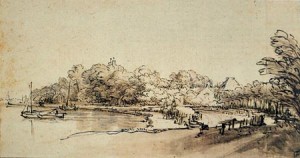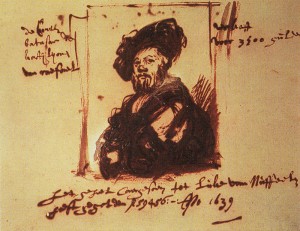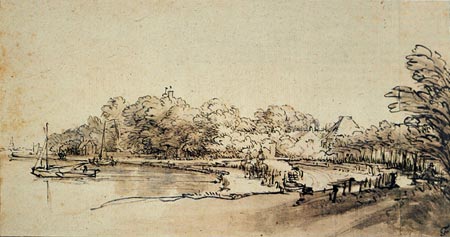
It all began with me knocking on a door. I was a student, at the end of a bad year. My stepfather had absconded, my engagement ring had been returned, and my dearest relative had passed away suddenly. My 80s were dying in an inglorious ditch. It’s always the same advice in these situations: get out and meet new people. I needed something new, but little did I know as my knuckles bounced gently against the oak just how much new I was about to get.
As for what followed, we never knew any writers or artists in my family. (Or any lawyers, doctors, journalists, directors, producers, ex-pats – at least, none that I was ever introduced to: such people aren’t found in lower middle class suburbia). When our household thought about them at all, writers and artists were “from off” as they’d say in Herefordshire, products of suspect places and inadequate mores. We had library cards, and took fiction home to read, but that’s as close as we got.
At school, I’d gone slightly further, taking a corner of the library for my own, the one with the full set of Wisden on one hand and the Georgian Poets on the other, with the view over the trees that flamed each autumn. I’d tried writing a bit of poetry and even bought Frances Stillman’s rhyming dictionary. It wasn’t any good: what would good poetry have to do with someone like me, or a background like mine?
So when the door opened and I found myself surrounded by real paintings and another in progress, hemmed in by tables with typed sheets of real poems scattered on them, it was a shock. I hadn’t known this kind of thing still existed, even in Oxford. But it was a generous, nourishing, reinvigorating sort of a shock, with an laughing, expansive, Dickensian, celebratory hospitality to it. Real people took the fine arts seriously and practiced them. Here was one now, pushing a coffee cup into my hand and cracking a joke in welcome.
Nothing was ever the same again.
But there was a flipside. I’d found myself in warm accepting artistic company with my mind and life unfolding at exhilarating speed. It was marvellous. But here were my new friends’ poems in proof from the printers, here was a winestained commission for a painting, here was a stack of fresh ink sketches bound for Gerard Woodward’s first collection. Where were my drawings, paintings and poems? These people were my age, and had been doing this for years. I had to catch up..
My old man said, follow the van.. and the hols found me hunched up at a white melamine dressing table that dug into my thighs with Betty Edwards’ Right Way To Draw propped up on a stack of books containing manuals of calligraphy, Bloodaxe and Faber anthologies, novels by Virginia Woolf and something called The Step by Step Art School: Oils.
It took me a year. By the end of it, I’d had someone illustrate a poem of mine; college societies used my calligraphy in their posters; I’d my drawings and paintings framed on my wall. I’d been a guest at authors’ Tudor manors and Cornish fishing cottages and London flats. I’d read every twentieth century poet and art monographs by the hundred. There was a chiming clock on my mantlepiece and a Turkey carpet on my floor, heavily inkstained. I wrote at a candlewax-covered Edwardian rolltop desk next to a hatstand and a pair of standard lamps.
None of it lasted. How could it? I’d missed the point from the very beginning.
I’d been trying to become an artist, not drawing and painting; trying to become a writer, not writing. I’d thought that I had to fast-track myself to a certain level of competence, at which point something would click into place. The obvious metaphor for this is escape velocity, and, quite frankly, getting to escape velocity had been miserable. My sense of taste had condemned my work and progress at every turn. It wasn’t a writer’s writing. It wasn’t an artist’s drawing. But I’d slaved to get even unto that point of judgement.
A few weeks ago, and twenty years on, I pulled them all out again, the drawings, the paintings, the poems, the calligraphy. The sketchbooks like diaries with a few entries at the front, then nothing. Laid out, my entire oeuvre just about covered a double bed.
I began again. Quietly, without saying anything to anyone, I set aside an hour or so every evening in which to go into the spare bedroom and draw and write. No ambitions, no targets, no dreams of publication, no private view fantasies. “Just to see you run, old man” says Aubrey to Liddell in Chariots of Fire: and this was just to be doing it, to have the private knowledge that I had this hinterland once more.
“Get up, lad..get up…”
My wife had given me a lovely bound sketchbook from Edinburgh’s Greyfriar’s art shop, a kindly little nudge. I bought myself a 4B pencil for 65p and started in on some blind contour drawing.
With blind contour drawing, you move your eye along the edges of the object you’re focussed on, and move your pencil on the paper in sympathy with it. Your gaze remains on the object: what’s actually happening on the paper doesn’t matter because the exercise is all about observation and interaction, not result.
After about a week of this, one of those occasional unspoken understandings came to me, and I sank deeply, wonderfully into relationship with the shapes and lines and contours of the random slippers and computer kit and filthy old jeans and spare-room junk.. and drew and drew.
It had happened so quickly, and with so little invitation on my part that it was almost banal. But this is what I’d missed! The big secret! That there is an intense pleasure in the interaction with the world through drawing.
Like meditation, drawing turns out to be an observing awareness, not a judging one. Seen this way, it’s extremely freeing and liberating. And you discover that everything is eloquent. In every shape, every turn, corner and curve and straight, there’s a quiet exultance and communication. Drawing, in truth, is experiencing this through interaction with what’s in front of you. It’s not about accuracy, or likeness, Â not primarily anyway.
It’s not about being a witty kind of pencil camera, or about building a reputation. People should be told. We don’t choose our passions, our interests. They are latent within us until we stumble on them (in rooms full of paintings, poems and coffee). Being drawn towards the arts is about being drawn through that intense, eloquent interaction with the world. The BP Portrait Award is a peak, but it’s all about the climbing.

And there was one more thing. Back in the school library, in my alcove with the Wisdens and the poets and the trees that flamed each autumn, I had hint of a different and better world, in which I could exist, breathe and live freely, lifted out of the tension and paranoia that gripped the tempores and mores I found myself among. I never really found it: like most things the British want, I’d projected it back into the past as something that had been real once but had been seen off by pop music or the motor car. But it was so close – a breath away – close enough to provoke mourning and frustration. Whatever was keeping it away, the unjudging observation and interaction involved in drawing shortcircuited in no time, and replaced it with a complete immediacy and a sense of being wholly alive.
Which is why, it turned out, people did drawing. Not for friendship, publication or fame. Not to fill the gaps misfortune opens up in life. But because everything is eloquent, and sinking down into that eloquence is one of the most immediate and intense ways of living.
It works for poetry too.
Postscript on artists and depression
What about the well-attested connection between genius and madness? Artists like Egon Schiele? Or works like Goya’s Los Desastres de la Guerra? Is it sufficient to suggest that in the intensity of the interaction with the world, imagination and creative shaping can’t be avoided, and must come into play? Exultance and immersion can be liberating and be dark at the same time. But this is a vast topic: I just wanted to touch on it, knowing that some of the above will seem Pollyanna to those who happened on all this long before I did.

It once occurred to me what was the permitted, indeed encouraged, source of visual delight for lads of my generation. Stamp collecting: many of the stamps had a brassy, colourful beauty. Philately would get you pleasure. Until you graduated to motorbikes, RAF Flying Review, and trad jazz, anyway. And Shakespeare. Bloody nonpareil, Shakespeare.
Oh, yes, stamps – that mix of aesthetics and genuine adventure. At that age, everything in the album is more travelled than oneself with that Flemingesque glamour of distance and air travel. I must write something about Edward VIII stamps sometime – my favourite issue.